It is often hard for human beings to rethink their political positions because we are entrenched in our own worldview, or what we might call our ideology. It is hard to view our own culture and beliefs critically because we are inside our ideology, our own familiar values and perspectives.
Political cartoons can help us to see our world in a different way because they use a primarily visual medium. The pen and ink drawings hit us immediately, without the use of many words. We have to work to decipher the visual message, so we are a little less likely to immediately recognize the message as one that is at odds with what we believe.
It could be argued that, as we move through the interpretive process of decoding a primarily visual message, we are taking it in, absorbing it.
There is another way that political cartoons work against—or past—our comfortable way of thinking. They bring together different worldviews in a way that forces us out of our comfort zone and into a new perspective. We might say that political cartoons usually reflect a mash up of more than one cultural context or ideology. The effect is jarring. It forces us to reorient our beliefs and rethink a situation that we thought we had figured out.
Imagine that you are living during the Vietnam War. On television, you watched reporters talking about the war. You would also be watching college student’s protest against the war and against the bombings in Vietnam and surrounding countries. You might see images of these college students carrying signs that say “Stop the Bombings” down the streets of American cities. As an American, you might have said, “Why are they protesting against us bombing the enemy? We are at war. We should be bombing them.”
Now, look at Bill Graham's political cartoon titled “South Vietnamese Bombings.” Think about how he has brought together two worlds in a single image. We have protesters who are similar to the college students marching down the streets of Washington, DC, or other American cities. Yet, the protesters are actually Vietnamese who are fleeing their village, which appears to have been destroyed by American bombs. With this mashup of two worlds, Graham is encouraging us to rethink how we view college students who are against the bombing. He wants us to move from seeing the college students speaking against our national interest and begin to see them as speaking for the Vietnamese whose villages are being destroyed.
*The banner photo shows a cartoon titled: "Bad apple" by Jon Kennedy depicts an apple, representative of the Vietnam War, that is riddled with worms and bruises labeled "crime," "corruption," "G.I. drug addiction," "moral letdown," divided nation," "youth counter culture," "national fatigue," and "economic dislocations." June 6, 1971.
George H. Jensen, Ph. D., Professor of Rhetoric and Writing, University of Arkansas at Little Rock, is a specialist in Composition and Rhetoric. His recent books include Some of the Words Are Theirs: A Memoir of an Alcoholic Family, Identities Across Texts, and Storytelling in Alcoholics Anonymous: A Rhetorical Analysis.
